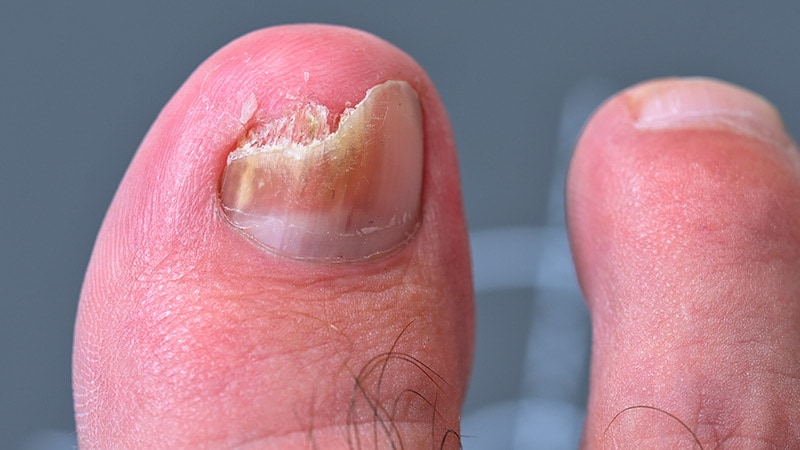Nailfold Capillaroscopy Reveals Distinct Capillary Changes in Nail Diseases
Centrala begrepp
Nailfold capillaroscopy can identify specific capillary abnormalities associated with various nail conditions, providing a potential non-invasive diagnostic tool.
Sammanfattning
This study evaluated the use of nailfold capillaroscopy, an imaging technique, to assess capillary features in patients with different nail disorders. The researchers enrolled 128 patients with various nail conditions, including nail psoriasis, onychomycosis, nail lichen planus, retronychia, and others, as well as healthy controls.
The key findings are:
Patients with nail psoriasis showed decreased capillary density and length, more crossed and tortuous capillaries, and increased abnormal capillary morphology compared to controls.
Patients with onychomycosis (both fingernail and toenail) had a higher frequency of abnormal capillary morphology, particularly meandering capillaries.
Patients with nail lichen planus, onychopapilloma, and retronychia exhibited significantly shorter capillaries than controls. Retronychia was also associated with increased disorganized polymorphic capillaries.
Patients with brittle nail syndrome and eczema showed no significant differences in capillary features compared to controls.
The authors suggest that nailfold capillaroscopy could be a quick, cost-effective, and non-invasive imaging modality to aid in the diagnosis and treatment of various nail disorders.
Imaging Technique Reveals Key Features of Nail Diseases
Statistik
Patients with nail psoriasis had decreased capillary density and length (P < .001) compared to controls.
Patients with nail psoriasis had more crossed and tortuous capillaries (P < .02) and increased abnormal capillary morphology (P = .03) compared to controls.
75.0% of patients with fingernail onychomycosis and 76.9% of patients with toenail onychomycosis had meandering capillaries.
Patients with nail lichen planus (P < .01), onychopapilloma (P = .01), and retronychia (P = .03) showed significantly shorter capillaries than controls.
Patients with retronychia had increased disorganized polymorphic capillaries (P = .02).
Citat
"Our findings highlight nailfold capillaroscopy as a potentially quick, cost-effective, and noninvasive imaging modality as an adjunct for diagnosis and treatment initiation for patients with onychodystrophies."
Viktiga insikter från
by Edited Deepa... på www.medscape.com 09-11-2024
https://www.medscape.com/viewarticle/nailfold-capillaroscopy-reveals-key-features-nail-diseases-2024a1000ghf
Djupare frågor
How could nailfold capillaroscopy be integrated into the standard diagnostic workflow for nail disorders in clinical practice?
Nailfold capillaroscopy could be integrated into the standard diagnostic workflow for nail disorders by establishing it as a routine examination tool during dermatological assessments. Clinicians could incorporate nailfold capillaroscopy as a noninvasive imaging modality to evaluate patients presenting with nail abnormalities. This technique allows for the visualization of capillary density, length, and morphology, which are critical indicators of various nail conditions such as nail psoriasis, onychomycosis, and retronychia.
To facilitate this integration, training programs could be developed for dermatologists and other healthcare providers to enhance their proficiency in performing and interpreting capillaroscopy. Additionally, clinical guidelines could be established to recommend nailfold capillaroscopy for specific nail disorders, particularly those with known vascular changes. By doing so, clinicians could improve diagnostic accuracy, tailor treatment plans more effectively, and monitor disease progression or response to therapy. Furthermore, the cost-effectiveness and quick nature of the procedure make it an attractive option for enhancing patient care in dermatology.
What are the potential limitations or challenges in interpreting nailfold capillaroscopy images, especially for less experienced clinicians?
Interpreting nailfold capillaroscopy images presents several challenges, particularly for less experienced clinicians. One significant limitation is the variability in capillary morphology among different nail conditions, which can lead to misinterpretation. For instance, distinguishing between normal and abnormal capillary features requires a keen eye and familiarity with the specific changes associated with various nail disorders, such as the tortuous and meandering capillaries seen in nail psoriasis and onychomycosis.
Additionally, the quality of capillaroscopy images can be affected by factors such as uneven nail surfaces, scaling, onycholysis, and thickened toenails, which may obscure the capillary structures and complicate the analysis. These technical difficulties can hinder accurate assessments and lead to inconsistent results. Furthermore, the small sample size of certain nail conditions in studies may limit the generalizability of findings, making it challenging for clinicians to apply the results to their patient populations confidently. Continuous education and experience are essential for clinicians to overcome these challenges and enhance their interpretative skills in nailfold capillaroscopy.
Could nailfold capillaroscopy provide insights into the underlying pathophysiology of different nail conditions beyond just diagnostic applications?
Yes, nailfold capillaroscopy has the potential to provide valuable insights into the underlying pathophysiology of various nail conditions beyond its diagnostic applications. By analyzing capillary features such as density, length, and morphology, researchers can gain a deeper understanding of the vascular changes associated with specific nail disorders. For example, the observed decrease in capillary density and length in patients with nail psoriasis may reflect underlying inflammatory processes and vascular alterations that contribute to the disease's pathogenesis.
Moreover, the identification of abnormal capillary morphology, such as branching and meandering capillaries, can offer clues about the mechanisms driving nail disorders. These morphological changes may indicate disrupted angiogenesis or microvascular dysfunction, which are critical components of the inflammatory response in conditions like nail lichen planus and onychomycosis.
By correlating capillaroscopic findings with clinical outcomes and histopathological data, researchers can further elucidate the pathophysiological mechanisms at play in nail diseases. This knowledge could lead to the development of targeted therapies and improved management strategies, ultimately enhancing patient care in dermatology. Thus, nailfold capillaroscopy serves not only as a diagnostic tool but also as a valuable research instrument for advancing our understanding of nail disorders.
0
